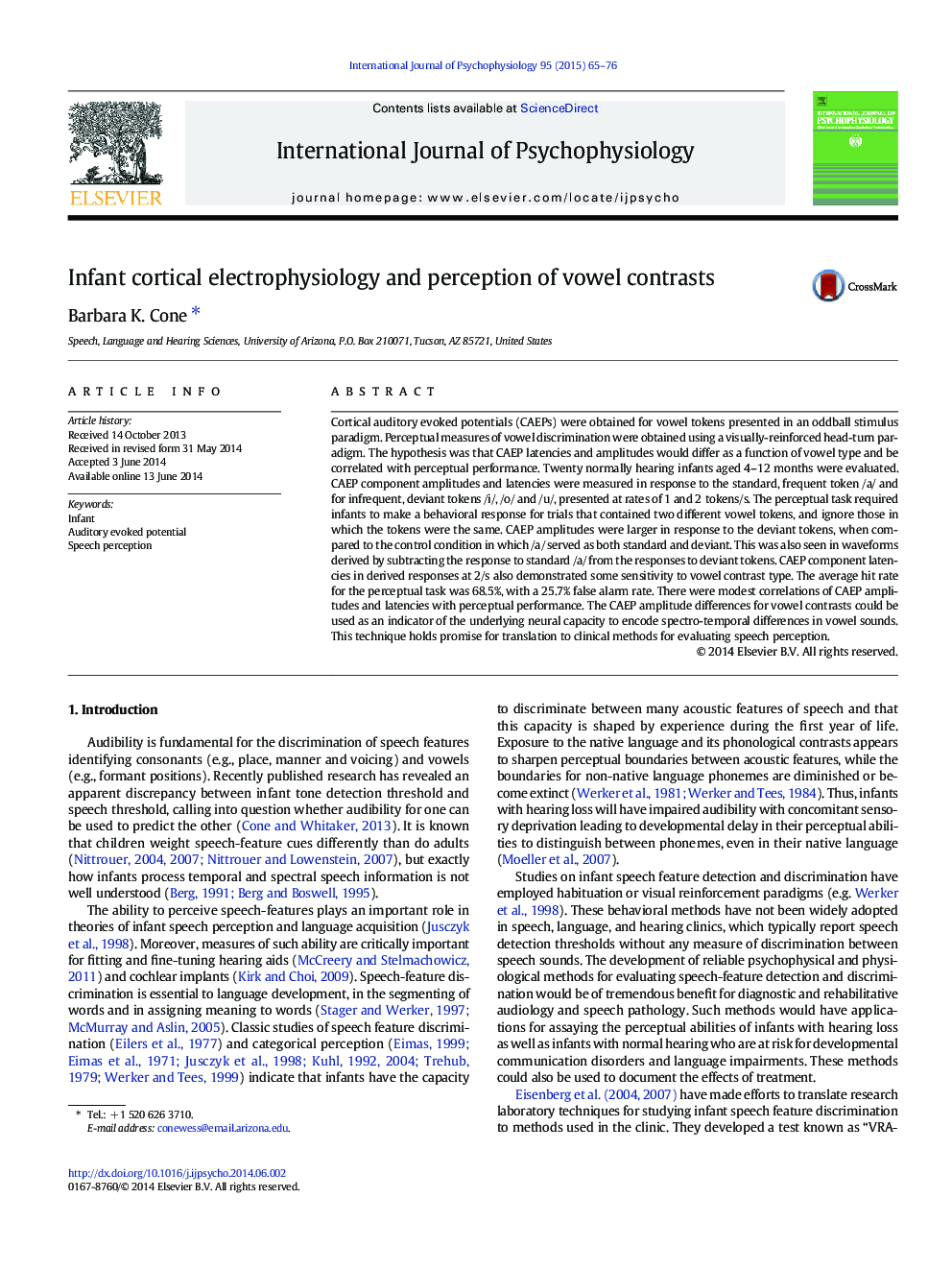| کد مقاله | کد نشریه | سال انتشار | مقاله انگلیسی | نسخه تمام متن |
|---|---|---|---|---|
| 7295554 | 1474410 | 2015 | 12 صفحه PDF | دانلود رایگان |
عنوان انگلیسی مقاله ISI
Infant cortical electrophysiology and perception of vowel contrasts
ترجمه فارسی عنوان
الکتروفیزیولوژی مغز اطفال و ادراک از کنش های واضح
دانلود مقاله + سفارش ترجمه
دانلود مقاله ISI انگلیسی
رایگان برای ایرانیان
کلمات کلیدی
نوزاد شنوایی منجر به پتانسیل، ادراک گفتاری،
موضوعات مرتبط
علوم زیستی و بیوفناوری
علم عصب شناسی
علوم اعصاب رفتاری
چکیده انگلیسی
Cortical auditory evoked potentials (CAEPs) were obtained for vowel tokens presented in an oddball stimulus paradigm. Perceptual measures of vowel discrimination were obtained using a visually-reinforced head-turn paradigm. The hypothesis was that CAEP latencies and amplitudes would differ as a function of vowel type and be correlated with perceptual performance. Twenty normally hearing infants aged 4-12Â months were evaluated. CAEP component amplitudes and latencies were measured in response to the standard, frequent token /a/ and for infrequent, deviant tokens /i/, /o/ and /u/, presented at rates of 1 and 2Â tokens/s. The perceptual task required infants to make a behavioral response for trials that contained two different vowel tokens, and ignore those in which the tokens were the same. CAEP amplitudes were larger in response to the deviant tokens, when compared to the control condition in which /a/ served as both standard and deviant. This was also seen in waveforms derived by subtracting the response to standard /a/ from the responses to deviant tokens. CAEP component latencies in derived responses at 2/s also demonstrated some sensitivity to vowel contrast type. The average hit rate for the perceptual task was 68.5%, with a 25.7% false alarm rate. There were modest correlations of CAEP amplitudes and latencies with perceptual performance. The CAEP amplitude differences for vowel contrasts could be used as an indicator of the underlying neural capacity to encode spectro-temporal differences in vowel sounds. This technique holds promise for translation to clinical methods for evaluating speech perception.
ناشر
Database: Elsevier - ScienceDirect (ساینس دایرکت)
Journal: International Journal of Psychophysiology - Volume 95, Issue 2, February 2015, Pages 65-76
Journal: International Journal of Psychophysiology - Volume 95, Issue 2, February 2015, Pages 65-76
نویسندگان
Barbara K. Cone,
